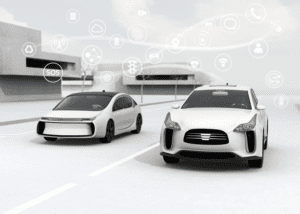For the first time, the majority of population lives nowadays in cities, and will increase up to nearly 70% in 2050. Considering only China and India, they will require 50 new cities of > 1M hab to accommodate population growth.
Increased pressure on infrastructures, resources consumption and environmental conditions are nowadays key aspects for city governance will be lot more stressing in the future, in terms of achieving sustainability for growth (both economic and demographic). Mobility is, in fact, critical and highly associated by now with economic growth, and also one of the most significant GHG generators. As efforts are focused on reducing GHG emissions in all main industrial sectors, with good results, mobility emissions are largely growing, even at higher rates than GDP.
Therefore, better and more innovative mobility management solutions are essential for the sustainable economic and social development of tomorrow’s cities and already, many state and regional transportation authorities, city agencies and metropolitan planning organizations are rethinking how they manage their entire transportation networks, in order to improve comprehensive management of these cities and enhanced quality of life for their citizens.
Under the Smart Cities initiatives umbrella, several cities have started to implement integrated city mobility management solutions which are aimed to collect, process and use data to generate added-value information for 4 main user types:
– Operation managers
– Higher-level managers (majors, government managers, mobility directors…)
– Companies
– Citizen as the final users of any Smart City
The approach of integrated city management solutions empowers city operators, enabling “situation awareness” and coordination between agencies to improve citizen’s mobility through efficient operation of the transportation network and city resources.
But even with excellent operation, end-users, such as citizens and external companies, are fundamental in boosting benefits for sustainable and efficient mobility. In this way, special attention has to be given to assure value for them in different aspects:
– Useful, reliable and in-time information generation
– Easy-to-access
– Easy-to-use
End-users are also of different types, creating a huge ecosystem with different needs and capacities to access information, based on their age, tech know-how, daily trips, etc… including temporary changes in location and objectives, as when they are in their own city or move as visitors or tourists.
Channels for information dissemination need to be considered and adapted to the different user types, accordingly to their actual situation, so no unique solution can be considered enough but most channels may be used in order to enable maximum dissemination and final results.
At the end of the day, being able to manage demand and shift users to alternative transportation networks contributes to the overall city sustainability strategy.

